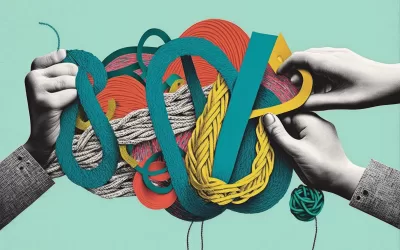Businesses communicating in the sustainability arena walk a very narrow tightrope: say too little, and your brand is behind the market; say too much and potentially invite unwanted scrutiny. So, what’s the right balancing act?
Great communications have always been built around an authentic message that leverages a company’s strengths while remaining aware of the blind spots. Communicating about sustainability or ESG is no different; there’s just less room for ambiguity.
Customers, clients, and the global business ecosystem are paying attention. Forty-six percent of consumers are looking to brands to take the lead on creating sustainable change. Regulatory moves are forcing companies across the value chain to either step up or yield to competitors who prioritize sustainable business.
What’s Valued in Your Sustainability Message?
There are three main things to remember as you craft and update your sustainability message.
Be authentic.
You’ve heard it before, and here it is again. Authenticity, authenticity, authenticity. We live in a fully transparent world, with information a click/swipe/Siri away.
If your audience wants to dig around to corroborate your claims, they have the means. And it’s an unforgiving landscape for those who get called out for inflated claims or obscuring the truth. Tell it like it is, and you’ll be rewarded long-term.
90% of consumers said that authenticity is important when deciding which brands they like and support (SOURCE)
Know what matters.
Don’t guess what your stakeholders care about – and that means your buyers, suppliers, employees, and community. Leadership knows what’s clearly important to the bottom line, and they know what’s required for regulatory compliance and RFP qualifications. But employees and the communities in which you operate have a powerful voice.
Ask, listen, and be thoughtful about what your ecosystem needs.
Transparency is good. Even if it initially looks bad.
Part of authenticity is being comfortable with the idea that there’s work ahead. Sustainability isn’t a “we did it!” thing. It’s a long, long arc with many steps that need to be taken by an organization.
For example, if your carbon footprint is high or your employee safety record is poor, that’s okay (for now). The important part is to own it, have a plan to reduce it, and then implement it.
That’s a terrifying proposition for traditional businesses that have for decades been held accountable for meeting financial benchmarks. However, when it comes to sustainability, yes, companies are also held accountable – but they’re also rewarded for being clear about where they stand and their goals.
What is Your Next Step?
It takes work to build a message with these elements in mind. One way to start is to identify key issues through a materiality assessment. The process involves internal reviews to gauge the current state and future goals and competitive research to determine where your best (and most authentic) stories fit.
Globally, 71% of N100 companies and 77% of G250 companies perform materiality assessments (SOURCE)
Is it work? Yes! But with this information, companies can confidently craft their message and communications strategy supporting their growth. The outcome can reduce risk, open new opportunities with customers and partners, and generate greater stakeholder loyalty.
For more insight or information about Longview’s approach, take a look at our sustainability communications expertise or contact us today.




